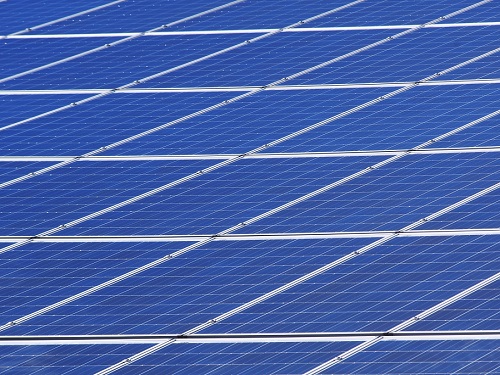Dutch start-up ‘Oceans of Energy’ has been awarded the contract for installing and operating an offshore solar farm inside the Hollandse Kust Noord offshore wind park by CrossWind, a joint venture between Shell and Eneco.
World First
Oceans of Energy says it will be the first offshore solar farm in the world to be connected, installed, and operated within a wind farm in high wave conditions.
What Is Offshore Solar?
Offshore solar refers to the installation of solar panels on floating platforms or structures in bodies of water, such as oceans or lakes.
Solar Farm Between The Offshore Wind Turbines
The solar panels for the project will be situated in-between the offshore wind turbines, representing an efficient way of sharing the sea space.
CrossWind’s Hollandse Kust Noord project will also use innovative, cutting-edge technologies and engineering solutions to improve the flexibility of offshore wind parks.
Energy Produced On Less Sunny Days Too
Having an offshore solar within an offshore wind park makes it possible to also produce energy on sunny but less windy days, thereby increasing the utilization of the offshore power grid infrastructure.
The Benefits Of Offshore Solar
Having solar farms offshore can deliver a range of operational and green benefits, including:
– Increased efficiency: Offshore solar panels can capture more sunlight than onshore panels due to the absence of obstructions such as buildings, trees, or mountains. This results in increased efficiency and higher energy yields.
– Reduced land use: Offshore solar facilities can reduce the need for land-based solar projects, which can have a significant impact on wildlife habitats and local ecosystems.
– Reduced water consumption: Offshore solar panels require less water for cleaning and maintenance compared to land-based solar farms, which can be beneficial in areas with water scarcity.
– Enhanced energy security: Offshore solar can enhance energy security by diversifying the energy mix and reducing dependence on fossil fuels.
– Lower costs: As technology advances and economies of scale are achieved, the costs of offshore solar are expected to decrease, making it a more viable and cost-effective option for renewable energy generation.
– Reduced transmission losses: Offshore solar facilities located near coastal regions can reduce transmission losses by generating electricity closer to the point of consumption.
Overall, offshore solar has the potential to provide a significant contribution to the renewable energy mix while mitigating the negative impacts associated with land-based solar projects.
A Project With Several ‘Firsts’
The CrossWind and Oceans of Energy add offshore solar project is thought to have several ‘firsts,’ including:
– It’s the first wind park in the world with an offshore combination of battery storage and round-trip green hydrogen produced from offshore wind power on a Megawatt scale.
– It is also thought to be the first wind park that has committed to mature and demonstrate offshore wake control technologies like closed-loop active wake steering in combination with the novel active wake mixing to try and increase the efficiency of wind parks.
– A world first for an offshore solar system that’s electrically connected and operated within a wind park in harsh sea/high wave conditions.
Why More Difficult In Harsh Sea Conditions?
High wave conditions can make it more challenging to operate an offshore solar farm because of the risks of structural damage to the structures that support the solar panels, safety concerns (for maintenance and repair workers), reduced efficiency, and increased maintenance costs.
An Important Role In Energy Transition
Maria Kalogera, Innovations Manager of CrossWind, said about the project, “Offshore floating solar is an exciting area of renewable energy development that is poised to play an important role in the energy transition.”
Allard van Hoeken, founder and CEO of Oceans of Energy, said, “We will add offshore solar to offshore wind. Our performance and our system will be key to the success of the innovative part of the offshore wind farm.”
When Will It Be Up And Running?
The Oceans of Energy offshore solar farm won’t actually be working until 2025, but the wind park will be operational by the end of this year.
What Does This Mean For Your Organisation?
Although this is joint project with many ‘first offs,’ it could be the shape of things to come. A combination of new technologies has enabled the addition of a solar farm to an existing wind park’s offshore power grid infrastructure, thereby making it more efficient and saving costs, time, and resources. Finding sustainable, green energy sources is now a more pressing concern than ever and this development makes use of two of them most abundant sources in a way that doesn’t have an impact on the land. Although the solar farm side of the project is still some way from being operational, if successful it could provide opportunities in coastal areas around the world giving homes and businesses access to affordable green energy.





